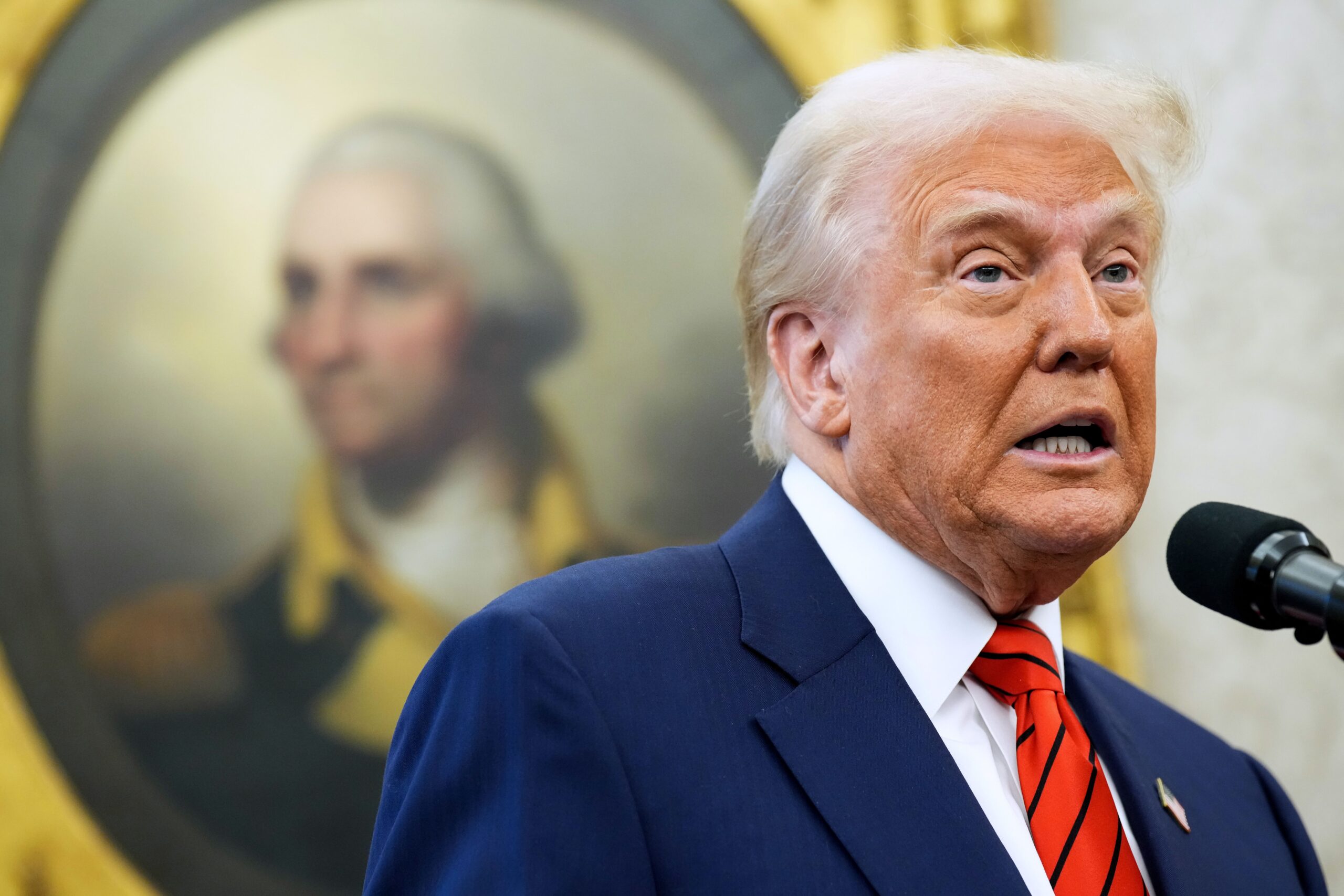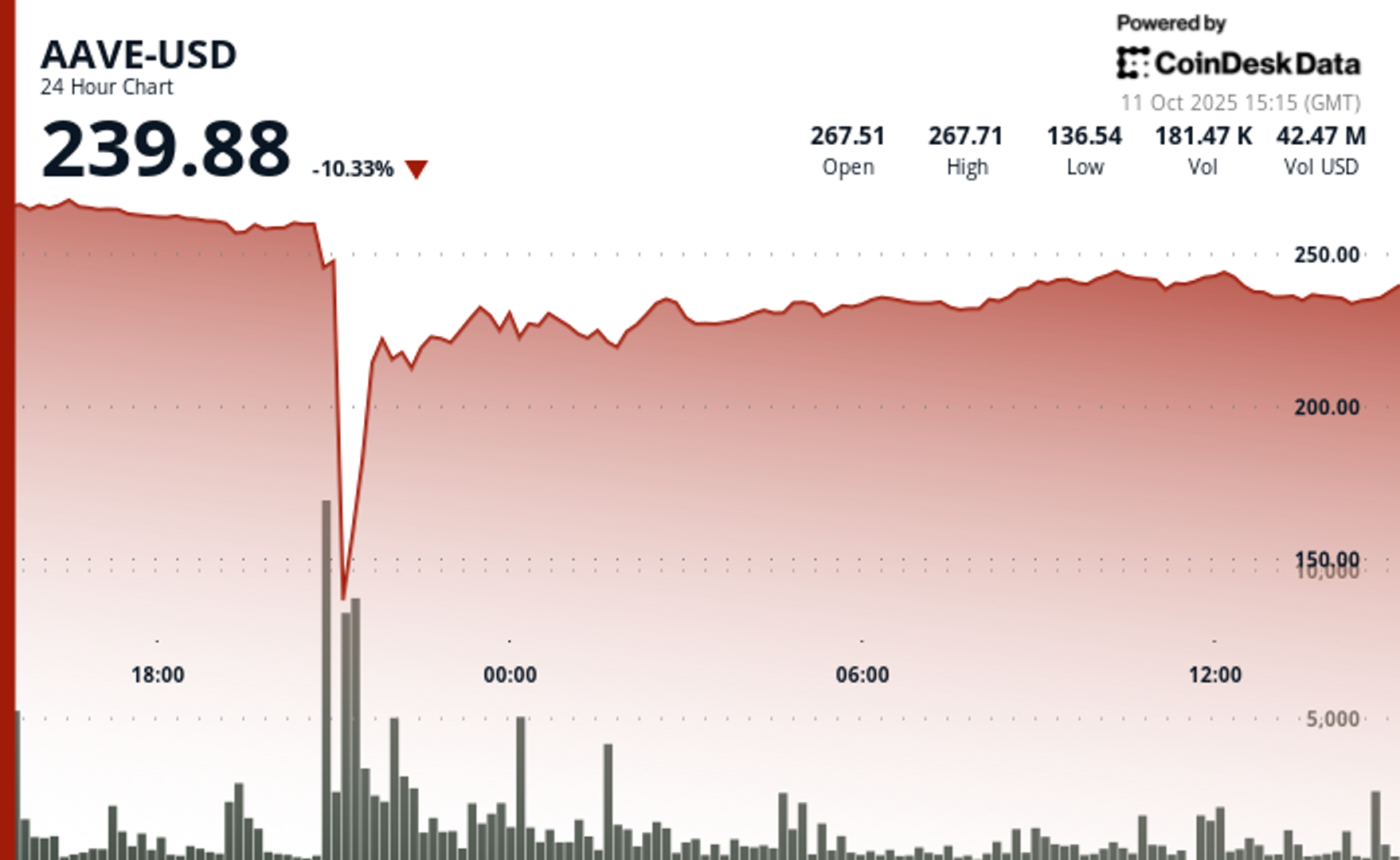Uncategorized
8 Reasons a Strategic Crypto Reserve Is a Bad Idea

One might think that virtually all Bitcoiners would be thrilled about the notion of the U.S. government acquiring BTC (and perhaps a basket of other cryptoassets) and effectively ratifying it as a global asset of consequence. However, I count myself among the few holdouts who don’t see the development as positive for either Bitcoin or the U.S. government itself. Here’s eight reasons why I don’t support the policy.
What is easily done is easily undone
If Bitcoiners want a reserve to last, they should want Trump to seek Congressional authorization for a purchase (as is customary for any large outlay). If it is done solely by executive fiat, the next administration will not feel bound by the policy and could trivially reverse it (and nuke the market in the process). If Bitcoiners sincerely believe it benefits the U.S. to acquire bitcoin and hold it for a long period of time, then they would have no issue insisting that the government pass a law authorizing spending for the Reserve, rather than having Trump enact the policy unilaterally.
The fact that many Bitcoiners are hoping that Trump makes the policy without asking Congress for approval shows that they are chasing a short-term pump, rather than actually being sincere about the long-term value of the Reserve for the U.S. A future Democratic administration will have no qualms about immediately divesting the Reserve.
The global reserve issuer should not disrupt itself
The U.S. is the issuer of the global reserve currency. We still don’t know how the Crypto Reserve will be positioned – as simply an investment fund, or something more inherent to the dollar such as a new commodity-based currency system like the old gold standard.
If the Crypto Reserve is contemplated as providing a new backing for the dollar, I believe this will cause significant unease in dollar and Treasury markets. Effectively, the government will be signaling that it believes it no longer has faith in the dollar system as it currently exists, and a radical change is needed. I imagine that this would cause already-high rates to rise, as the market starts to wonder whether the U.S. is contemplating a default on its debt. The government should be focused on shoring up investors’ faith in its ability to sustain its debt obligations by pursuing pro-growth and deficit-reducing policies, not toying with the entire structure of the dollar system.
Many Bitcoiners don’t buy this line of reasoning and simply want to accelerate the collapse of the dollar. I view this as a kind of financial terrorism. I don’t believe in financial accelerationism nor do I think bitcoin – or any other cryptoasset – is ready to serve as the backing of a new commodity standard for the dollar.
The U.S. already has plenty of exposure to Bitcoin
American funds and individuals hold more Bitcoin than the citizens of any other country on the planet – almost certainly by a large margin. The U.S. government already benefits from this state of affairs. When Bitcoin goes up, those Americans who realize their gains owe taxes to the government – either 20% or 40% of their gains based on how long they have held the position.
This is a meaningful point not to be overlooked. The U.S. already benefits when Bitcoin goes up, through tax realizations – more than any other country. In light of this, do we really need to pick a massive fight and insist that the U.S. government gain direct exposure for these assets, too? No one is pushing for the U.S. government to acquire Apple or NVIDIA stock. Why Bitcoin?
There is no “strategic” value in a crypto reserve
Generally, assets and commodities that the U.S. acquires at the government level are things that might be required in a pinch, and have to be accumulated ahead of time. The Petroleum Reserve is a good example, as oil is clearly an essential commodity, and in a crisis, we might not be able to acquire all the oil that we need.
We also maintain reserves of other sorts of strategic assets, such as medical supplies and equipment, rare earth minerals, helium, metals like uranium and tungsten, and agricultural commodities. These all have a clear and obvious purpose: creating a reserve that can be dipped into in a time of emergency.
We also stockpile foreign FX, in case we need to make interventions into currency markets, although these interventions are increasingly rare. There is no obvious strategic use for bitcoin (and certainly not Cardano or Ripple). Ordinary Americans do not need a “supply” of bitcoin or any other cryptoasset to support their quality of life. This might change if the entire financial system runs on a blockchain and we need the tokens for gas (the one analogous «industrial” use I could think of), but that’s not the state-of-play today. The only “strategic” use for bitcoin is simply going “long” the asset at the state level and selling it later, but you could accomplish this with any other financial asset. There’s nothing unique about bitcoin (or any other cryptoasset) in this regard.
Of course, if you’re going to ultimately back the dollar with bitcoin in some kind of neo gold standard, then it would have a strategic use (in which case you should refer back to point #2). But I don’t think that is the intent right now.
A Crypto Reserve dilutes the value proposition of Bitcoin
Mixing Bitcoin in with rival cryptoassets Ethereum, Cardano, Solana, and XRP and giving them all an equal government imprimatur devalues Bitcoin and makes it look undifferentiated from these assets. Bitcoin is the only one of the bunch with a credible supply schedule and genuine decentralization at the protocol level. A crypto reserve confuses the issue and devalues Bitcoin in the public eye. Principled Bitcoiners should push for an all-or-nothing approach; either just Bitcoin, or no reserve.
Bitcoin does not need the government
I wonder what early libertarian Bitcoiners from 2012-16 would think of 2025 Bitcoiners pushing for the government to backstop the value of their coins. Beyond the confusing ideological evolution that the Bitcoin community has undergone, another point remains. Bitcoin has been one of the best performing investments in history, monetizing from nothing in 2009/10 to trillions of dollars in aggregate value in 2025. It has done all of this without government support, and, indeed, in many cases, despite overt hostility from powerful nation-states. A Crypto Reserve would transform bitcoin from an apolitical asset into the plaything of the government, subject to Washington’s political cycles. Bitcoiners were never ones to hitch their wagon to the government, and they shouldn’t start now.
It would turn Americans against Bitcoiners
Only a fraction (somewhere between 5-20%) of Americans own bitcoin, and even fewer own other cryptoassets. Many Bitcoiners are extremely wealthy due to their historical investments in the coin and others. At a time when government spending is under the microscope, using taxpayer dollars – regardless of how mechanically they are apportioned – to bolster the price of Bitcoin and other cryptoassets will be politically unpopular. Biden’s proposed student loan amnesty was met with great resistance, despite potentially applying to 43 million borrowers. Bitcoiners are a smaller bunch and even less in need of financial support from the government. This policy would undoubtedly cause an unnecessary backlash in broader society against the crypto community.
It looks self-interested
It’s no secret that Trump and his cabinet and inner circle have ownership in various cryptoassets. Trump himself has launched, or is affiliated with: an NFT project built on ETH, more than one memecoin built on Solana, and, of course, World Liberty Financial which holds an array of crypto assets. What we need from Trump is reasonable crypto policy, and based on his appointments at Treasury, Commerce, SEC, CFTC, OCC and others, it looks like he is delivering that.
However, using government resources to directly increase the value of coins that Trump (and many in his inner circle) hold leaves a sour taste. Most of us in the crypto industry have simply been asking for reasonable policy and fair rules of the road so that we can do business in the U.S. Trump is proposing going much further than this and using taxpayer dollars to speculate on the coins themselves, potentially enriching himself and his associates.
To Trump’s critics, this appears corrupt. It also makes the remainder of Trump’s pro-crypto policymaking and regulatory efforts look self-interested, rather than letting it stand on its own as good policy. A future administration could choose to throw the baby out with the bathwater, reversing all the progress the U.S. has made on crypto. The existence of the Reserve gives future regressive efforts an easy moral justification.
Business
AAVE Sees 64% Flash Crash as DeFi Protocol Endures ‘Largest Stress Test’

The native token of Aave (AAVE), the largest decentralized crypto lending protocol, was caught in the middle of Friday’s crypto flash crash while the protocol proved resilient in a historic liquidation cascade.
The token, trading at around $270 earlier in Friday, nosedived as much as 64% later in the session to touch $100, the lowest level in 14 months. It then staged a rapid rebound to near $240, still down 10% over the past 24 hours.
Stani Kulechov, founder of Aave, described Friday’s event as the «largest stress test» ever for the protocol and its $75 billion lending infrastructure.
The platform enables investors to lend and borrow digital assets without conventional intermediaries, using innovative mechanisms such as flash loans. Despite the extreme volatility, Aave’s performance underscores the evolving maturity and resilience of DeFi markets.
«The protocol operated flawlessly, automatically liquidating a record $180M worth of collateral in just one hour, without any human intervention,» Kulechov said in a Friday X post. «Once again, Aave has proven its resilience.»
Key price action:
- AAVE sustained a dramatic flash crash on Friday, declining 64% from $278.27 to $100.18 before recuperating to $240.09.
- The DeFi protocol demonstrated remarkable resilience with its native token’s 140% recovery from the intraday lows, underpinned by substantial trading volume of 570,838 units.
- Following the volatility, AAVE entered consolidation territory within a narrow $237.71-$242.80 range as markets digested the dramatic price action.
Technical Indicators Summary
- Price range of $179.12 representing 64% volatility during the 24-hour period.
- Volume surged to 570,838 units, substantially exceeding the 175,000 average.
- Near-term resistance identified at $242.80 capping rebound during consolidation phase.
Disclaimer: Parts of this article were generated with the assistance from AI tools and reviewed by our editorial team to ensure accuracy and adherence to our standards. For more information, see CoinDesk’s full AI Policy.
Business
Blockchain Will Drive the Agent-to-Agent AI Marketplace Boom

AI agents, software systems that use AI to pursue goals and complete tasks on behalf of users, are proliferating. Think of them as digital assistants that can make decisions and take actions towards goals you set without needing step-by-step instructions — from GPT-powered calendar managers to trading bots, the number of use cases is expanding rapidly. As their role expands across the economy, we have to build the right infrastructure that will allow these agents to communicate, collaborate and trade with one another in an open marketplace.
Big tech players like Google and AWS are building early marketplaces and commerce protocols, but that raises the question: will they aim to extract massive rents through walled gardens once more? Agents’ capabilities are clearly rising, almost daily, with the arrival of new models and architectures. What’s at risk is whether these agents will be truly autonomous.
Autonomous agents are valuable because they unlock a novel user experience: a shift from software as passive or reactive tools to active and even proactive partners. Instead of waiting for instructions, they can anticipate needs, adapt to changing conditions, and coordinate with other systems in real time, without the user’s constant input or presence. This autonomy in decision-making makes them uniquely suited for a world where speed and complexity outpace human decision-making.
Naturally, some worry about what greater decision-making autonomy means for work and accountability — but I see it as an opportunity. When agents handle repetitive, time-intensive tasks and parallelize what previously had to be done in sequence, they expand our productive capacity as humans — freeing people to engage in work that demands creativity, judgment, composition and meaningful connection. This isn’t make-believe, humanity has been there before: the arrival of corporations allowed entrepreneurs to create entirely new products and levels of wealth previously unthought of. AI agents have the potential to bring that capability to everyone.
On the intelligence side, truly autonomous decision-making requires AI agent infrastructure that is open source and transparent. OpenAI’s recent OSS release is a good step. Chinese labs, such as DeepSeek (DeepSeek), Moonshot AI (Kimi K2) and Alibaba (Qwen 3), have moved even quicker.
However, autonomy is not purely tied to intelligence and decision making. Without resources, an AI agent has little means to enact change in the real world. Hence, for agents to be truly autonomous they need to have access to resources and self-custody their assets. Programmable, permissionless, and composable blockchains are the ideal substrate for agents to do so.
Picture two scenarios. One where AI agents operate within a Web 2 platform like AWS or Google. They exist within the limited parameters set by these platforms in what is essentially a closed and permissioned environment. Now imagine a decentralized marketplace that spans many blockchain ecosystems. Developers can compose different sets of environments and parameters, therefore, the scope available to AI agents to operate is unlimited, accessible globally, and can evolve over time. One scenario looks like a toy idea of a marketplace, and the other is an actual global economy.
In other words, to truly scale not just AI agent adoption, but agent-to-agent commerce, we need rails that only blockchains can offer.
The Limits of Centralized Marketplaces
AWS recently announced an agent-to-agent marketplace aimed at addressing the growing demand for ready-made agents. But their approach inherits the same inefficiencies and limitations that have long plagued siloed systems. Agents must wait for human verification, rely on closed APIs and operate in environments where transparency is optional, if it exists at all.
To act autonomously and at scale, agents can’t be boxed into closed ecosystems that restrict functionality, pose platform risks, impose opaque fees, or make it impossible to verify what actions were taken and why.
Decentralization Scales Agent Systems
An open ecosystem allows for agents to act on behalf of users, coordinate with other agents, and operate across services without permissioned barriers.
Blockchains already offer the key tools needed. Smart contracts allow agents to perform tasks automatically, with rules embedded in code, while stablecoins and tokens enable instant, global value transfers without payment friction. Smart accounts, which are programmable blockchain wallets like Safe, allow users to restrict agents in their activity and scope (via guards). For instance, an agent may only be allowed to use whitelisted protocols. These tools allow AI agents not only to behave expansively but also to be contained within risk parameters defined by the end user. For example, this could be setting spending limits, requiring multi-signatures for approvals, or restricting agents to whitelisted protocols.
Blockchain also provides the transparency needed so users can audit agent decisions, even when they aren’t directly involved. At the same time, this doesn’t mean that all agent-to-agent interactions need to happen onchain. E.g. AI agents can use offchain APIs with access constraints defined and payments executed onchain.
In short, decentralized infrastructure gives agents the tools to operate more freely and efficiently than closed systems allow.
It’s Already Happening Onchain
While centralized players are still refining their agent strategies, blockchain is already enabling early forms of agent-to-agent interaction. Onchain agents are already exhibiting more advanced behavior like purchasing predictions and data from other agents. And as more open frameworks emerge, developers are building agents that can access services, make payments, and even subscribe to other agents — all without human involvement.
Protocols are already implementing the next step: monetization. With open marketplaces, people and businesses are able to rent agents, earn from specialized ones, and build new services that plug directly into this agent economy. Customisation of payment models such as subscription, one-off payments, or bundled packages will also be key in facilitating different user needs. This will unlock an entirely new model of economic participation.
Why This Distinction Matters
Without open systems, fragmentation breaks the promise of seamless AI support. An agent can easily bring tasks to completion if it stays within an individual ecosystem, like coordinating between different Google apps. However, where third-party platforms are necessary (across social, travel, finance, etc), an open onchain marketplace will allow agents to programmatically acquire the various services and goods they need to complete a user’s request.
Decentralized systems avoid these limitations. Users can own, modify, and deploy agents tailored to their needs without relying on vendor-controlled environments.
We’ve already seen this work in DeFi, with DeFi legos. Bots automate lending strategies, manage positions, and rebalance portfolios, sometimes better than any human could. Now, that same approach is being applied as “agent legos” across sectors including logistics, gaming, customer support, and more.
The Path Forward
The agent economy is growing fast. What we build now will shape how it functions and for whom it works. If we rely solely on centralized systems, we risk creating another generation of AI tools that feel useful but ultimately serve the platform, not the person.
Blockchain changes that. It enables systems where agents act on your behalf, earn on your ideas, and plug into a broader, open marketplace.
If we want agents that collaborate, transact, and evolve without constraint, then the future of agent-to-agent marketplaces must live onchain.
Business
‘Largest Ever’ Crypto Liquidation Event Wipes Out 6,300 Wallets on Hyperliquid

More than 1,000 wallets on Hyperliquid were completely liquidated during the recent violent crypto sell-off, which erased over $1.23 billion in trader capital on the platform, according to data from its leaderboard.
In total, 6,300 wallets are now in the red, with 205 losing over $1 million each according to the data, which was first spotted by Lookonchain. More than 1,000 accounts saw losses of at least $100,000.
The wipeout came as crypto markets reeled from a global risk-off event triggered by U.S. President Donald Trump’s announcement of a 100% additional tariff on Chinese imports.
The move spooked investors across asset classes and sent cryptocurrency prices tumbling. Bitcoin briefly dropped below $110,000 and ether fell under $3,700, while the broader market as measured by the CoinDesk 20 (CD20) index dropped by 15% at one point.
The broad sell-off led to over $19 billion in liquidations over a 24 hours period, making it the largest single-day liquidation event in crypto history by dollar value. According to CoinGlass, the “actual total” of liquidations is “likely much higher” as leading crypto exchange Binance doesn’t report as quickly as other platforms.
Leaderboard data reviewed by CoinDesk shows the top 100 traders on Hyperliquid gained $1.69 billion collectively.
In comparison, the top 100 losers dropped $743.5 million, leaving a net profit of $951 million concentrated among a handful of highly leveraged short sellers.
The biggest winner was wallet 0x5273…065f, which made over $700 million from short positions, while the largest loser, “TheWhiteWhale,” dropped $62.5 million.
Among the victims of the flush is crypto personality Jeffrey Huang, known online as Machi Big Brother, who once launched a defamation suit against ZachXBT, losing almost the entire value of his wallet, amounting to $14 million.
«Was fun while it lasted,» he posted on X.
Adding to the uncertainty, the ongoing U.S. government shutdown has delayed the release of key economic data. Without official indicators, markets are flying blind at a time when geopolitical risk is rising.
-

 Business12 месяцев ago
Business12 месяцев ago3 Ways to make your business presentation more relatable
-

 Fashion12 месяцев ago
Fashion12 месяцев agoAccording to Dior Couture, this taboo fashion accessory is back
-

 Entertainment12 месяцев ago
Entertainment12 месяцев ago10 Artists who retired from music and made a comeback
-

 Entertainment12 месяцев ago
Entertainment12 месяцев ago\’Better Call Saul\’ has been renewed for a fourth season
-

 Entertainment12 месяцев ago
Entertainment12 месяцев agoNew Season 8 Walking Dead trailer flashes forward in time
-

 Business12 месяцев ago
Business12 месяцев ago15 Habits that could be hurting your business relationships
-

 Entertainment12 месяцев ago
Entertainment12 месяцев agoMeet Superman\’s grandfather in new trailer for Krypton
-

 Entertainment12 месяцев ago
Entertainment12 месяцев agoDisney\’s live-action Aladdin finally finds its stars





